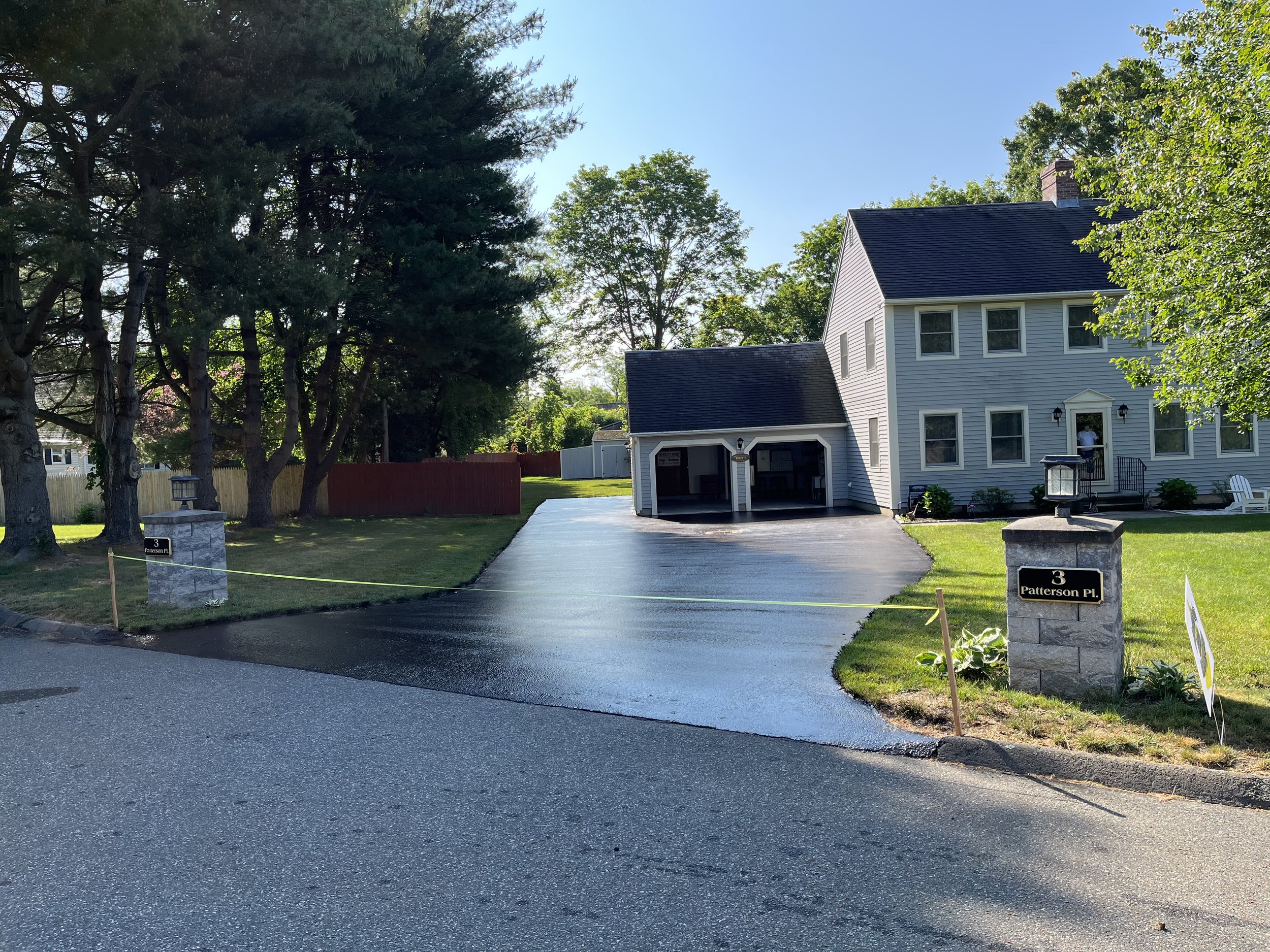Cold Mix Asphalt Vs. Hot Mix Asphalt: Which Is Right for You?

Structure Distinctions
Cold mix and hot mix asphalts differ dramatically in their structure, with distinctive qualities that impact their efficiency and applications. Cold mix asphalt is produced by emulsifying the asphalt binder with water and an emulsifying agent prior to mixing it with accumulation. This method permits the asphalt to be practical at lower temperatures, making it excellent for short-term repair services and for usage in colder climate condition. Warm mix asphalt, on the various other hand, is manufactured at high temperatures, commonly between 300-350 ° F, which helps to accomplish much better compaction and an extra long lasting last item. The warm mix asphalt production process includes heating up the accumulation and asphalt binder independently prior to combining them at the asphalt plant.
Moreover, cool mix asphalt tends to be much less dense and much more flexible than hot mix asphalt. This versatility makes it much better fit for locations with higher levels of activity, such as driveways or roadways with hefty web traffic. In contrast, hot mix asphalt is known for its high sturdiness and resistance to rutting and splitting, making it a recommended choice for highways and high-traffic roads where long life is essential.
Installment Refine Variations
The procedure of installing chilly mix and hot mix asphalt shows remarkable differences in their demands and procedures. Cold mix asphalt, being a more versatile product, can be applied straight from the bag or container onto the hole or harmed location. It requires minimal preparation job, such as cleaning up the location and compacting the cold blend with hand tools. This makes it a practical choice for quick and short-term solutions. In contrast, hot mix asphalt demands a much more sophisticated installation procedure. It includes warming the blend to high temperatures before laying it down on an effectively ready base. The preparation consists of compacting the base, using a tack layer, and using hefty machinery like pavers and compactors for a smooth see and sturdy coating. Because of the home heating requirements, warm mix asphalt installments are typically lugged out by professionals with customized equipment, ensuring a much more permanent and structurally sound outcome.
Durability and Durability Aspects
When considering asphalt options, durability and long life are critical aspects to examine for enduring pavement efficiency. Warm mix asphalt (HMA) is understood for its exceptional longevity and long life.
In terms of long life, HMA normally outmatches CMA because of its exceptional toughness and resistance residential or commercial properties. HMA sidewalks have a longer solution life, requiring much less frequent fixings and upkeep, which can equate to cost financial savings in the long run. In addition, HMA sidewalks are much more easily adjustable to meet details job requirements, additionally enhancing their longevity.
Cost Considerations
Thinking about the monetary implications is a vital aspect when reviewing the company website choice in between hot mix asphalt (HMA) and cool mix asphalt (CMA) for sidewalk projects. While the preliminary expense of warm mix asphalt is commonly greater than that of cold mix asphalt, HMA typically gives a more cost-efficient service in the lengthy run due to its exceptional longevity and durability. HMA is recognized for its ability to endure rush hour loads and extreme weather, decreasing the need for regular repairs and maintenance. On the various other hand, cool mix asphalt is more affordable upfront however might require more regular patching and resurfacing, causing greater maintenance costs with time.
In enhancement to material costs, it's essential to think about the expenses connected with installation and maintenance when comparing HMA and CMA. Inevitably, the decision in between HMA and CMA should take right into account not just the first cost however also the lasting financial ramifications to establish the most affordable option for the details pavement job.
Environmental Influence Comparison
Comparison of the environmental impacts between hot mix asphalt (HMA) and cold mix asphalt (CMA) reveals distinct differences in sustainability practices. HMA production needs high temperature levels, leading to raised power intake and greenhouse gas emissions.
Additionally, the usage of CMA usually entails reusing existing asphalt sidewalk, advertising source preservation and minimizing the quantity of waste sent to land fills. This reusing element even more enhances the sustainability of CMA compared to HMA. In general, when considering the ecological influence, CMA becomes a more ecologically sustainable selection as a result of its lower energy demands, decreased emissions, and the possibility for reusing existing materials. By choosing CMA over HMA, road construction tasks can contribute positively to environmental preservation efforts.
Verdict
Finally, the choice between chilly mix asphalt (CMA) and warm mix asphalt (HMA) depends on numerous elements such as structure, installment process, resilience, long life, cost, and environmental influence. angle parking. While CMA uses a quick and economical service for small repair services, HMA makes certain exceptional toughness and long life for rush hour locations. Consider these elements meticulously to determine which type of asphalt is the appropriate choice for your paving needs

Thinking about the monetary effects is read review a vital aspect when examining the selection in between hot mix asphalt (HMA) and cool mix asphalt (CMA) for pavement projects. While the first cost of hot mix asphalt is typically higher than that of cold mix asphalt, HMA commonly provides a more economical solution in the long run due to its superior toughness and long life. cold mix asphalt.Comparison of the ecological effects in between hot mix asphalt (HMA) and cold mix asphalt (CMA) exposes unique distinctions in sustainability techniques.In conclusion, the option in between cool mix asphalt (CMA) and warm mix asphalt (HMA) depends on various variables such as structure, installation procedure, resilience, long life, cost, and environmental impact